As the only city occupying four nights on an otherwise fast-paced agenda, there’s simply too much to share in a single post about Antwerp. Instead, it makes more sense to give a day-by-day account. That will likely mean seeing some of the same locations photographed on different days, but changing weather and the lighting at various times of the day make each view worthwhile. As a benefit, readers will get a 4-day, virtual vacation experience in place of a condensed overview.
The longer stay seemed appropriate given that Antwerp is the largest city in Flanders (Northern Belgium) with over 500,000 residents, and the province of the same name is home to 1.86 million. The port is second only to Rotterdam in Europe, giving it a certain status in international trade. The fact that 85% of the world’s rough diamonds, and 50% of cut stones pass through the city’s diamond district also earn it the title “Diamond Capital of the World.” In historical terms, all of this wealth is relatively new. Bruges and Ghent were previously the centers of prosperity in the region and it wasn’t until recent centuries that Antwerp ride to become the most influential city.
The result is an almost haphazard mix of modern and medieval characteristics that resembles a cross between Ghent and Rotterdam. The varied architecture comes together in a way that provides both beauty and the conveniences expected in a wealthy, western society. Even the “old” buildings were mostly constructed later, many in the 1800’s, to resemble the older city centers found in Ghent and Bruges. It’s actually a struggle to communicate how this feels to walk through. Turning a corner takes you from glitzy stores with international brand names to a potential historical film set, though the two often alternate within the same block.
Trams, buses, bicycles, scooters, and cars are everywhere, though it mostly doesn’t feel crowded or hectic due to spacious and organized layouts in the most heavily-trafficked areas. Residents show little sign of stress while navigating streets that seem chaotic at first glance. When an escape is needed, a city park is blocks away, and open countryside is reachable in fifteen minutes by rail.
That ease of train travel has led to many people living in the surrounding areas where homes are larger and more affordable. There may be other cultural factors, but it’s not much of a leap to link the evening exodus to early closing times. The busiest shopping street in town only had one store open past 7 PM to purchase more socks and a beanie.
That’s enough of random information and impressions though, so on to…
Day One Agenda
The train from Rotterdam took just over a half hour, but the timing barely worked out to drop off belongings at the hotel and arrive for a walking tour a minute before the 1:30 start time. After a bite to eat, the self-guided walk continued until almost nine. Battered feet and not knowing what else to do on a Monday might ended the day shortly after.
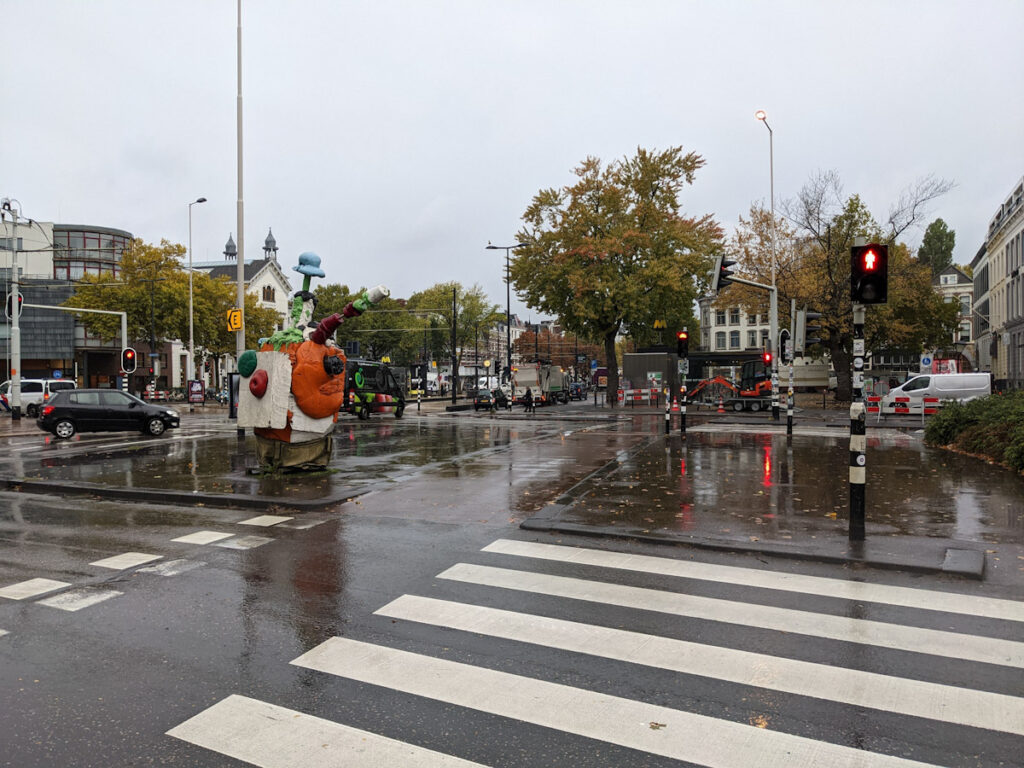
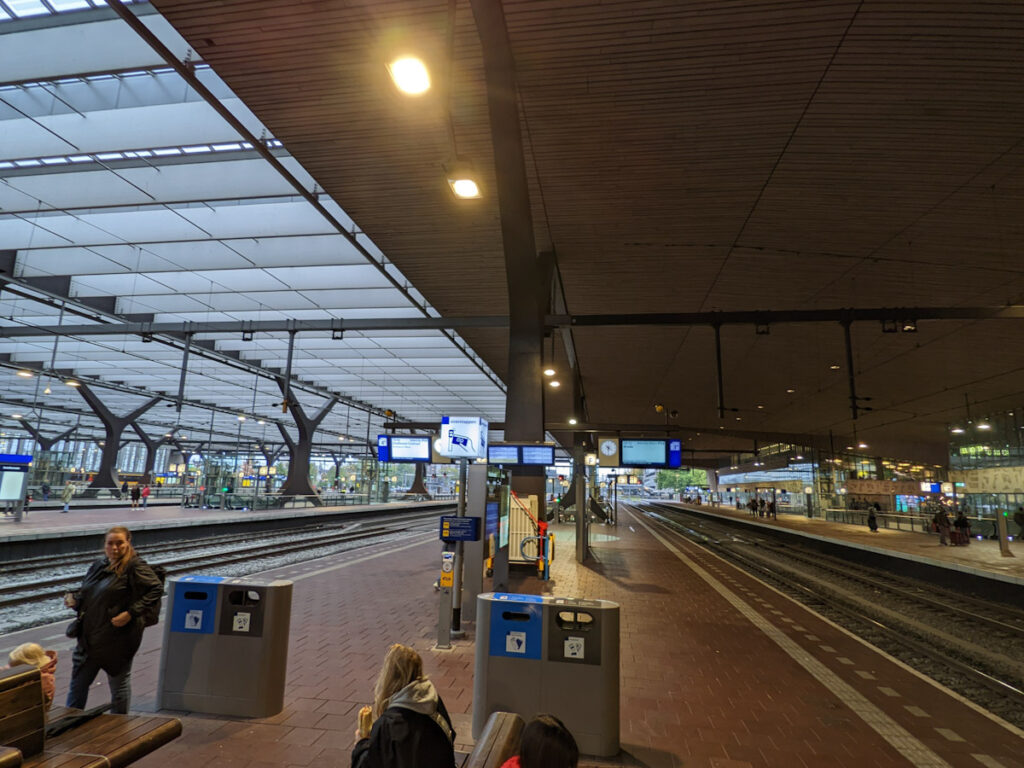
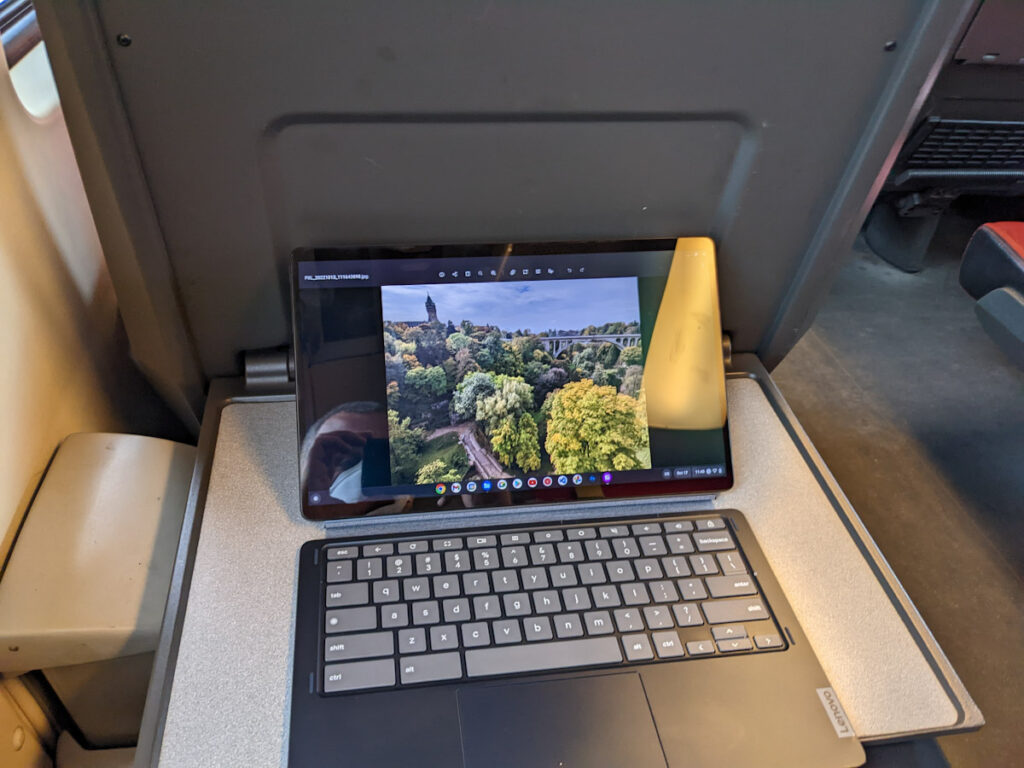
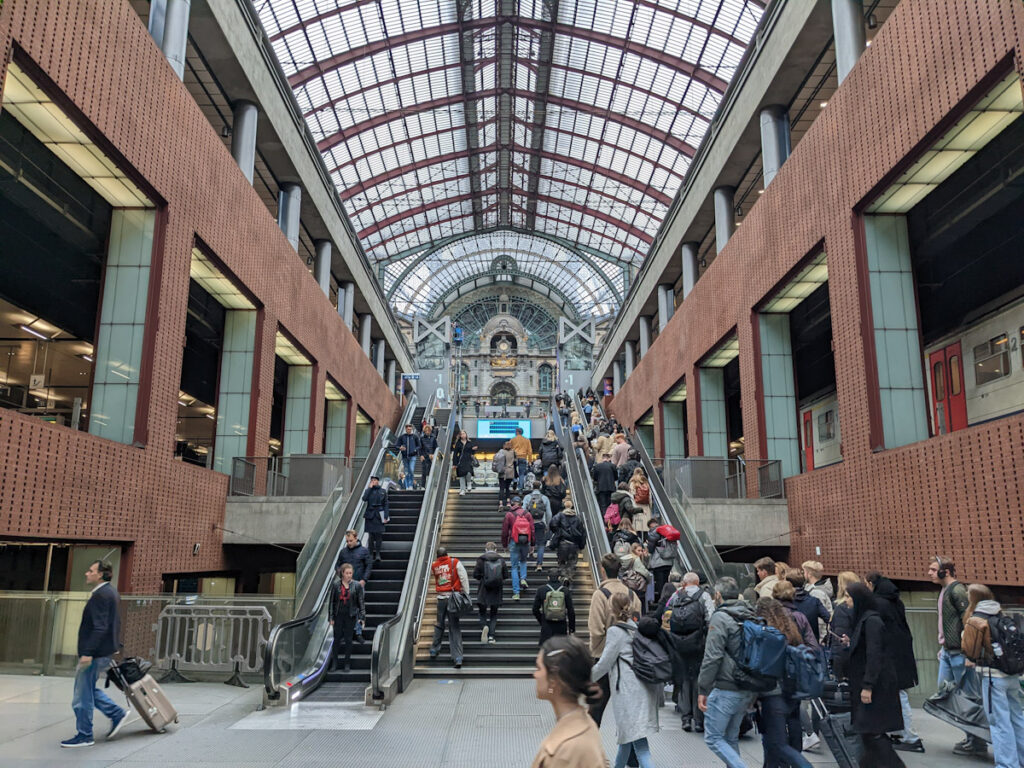


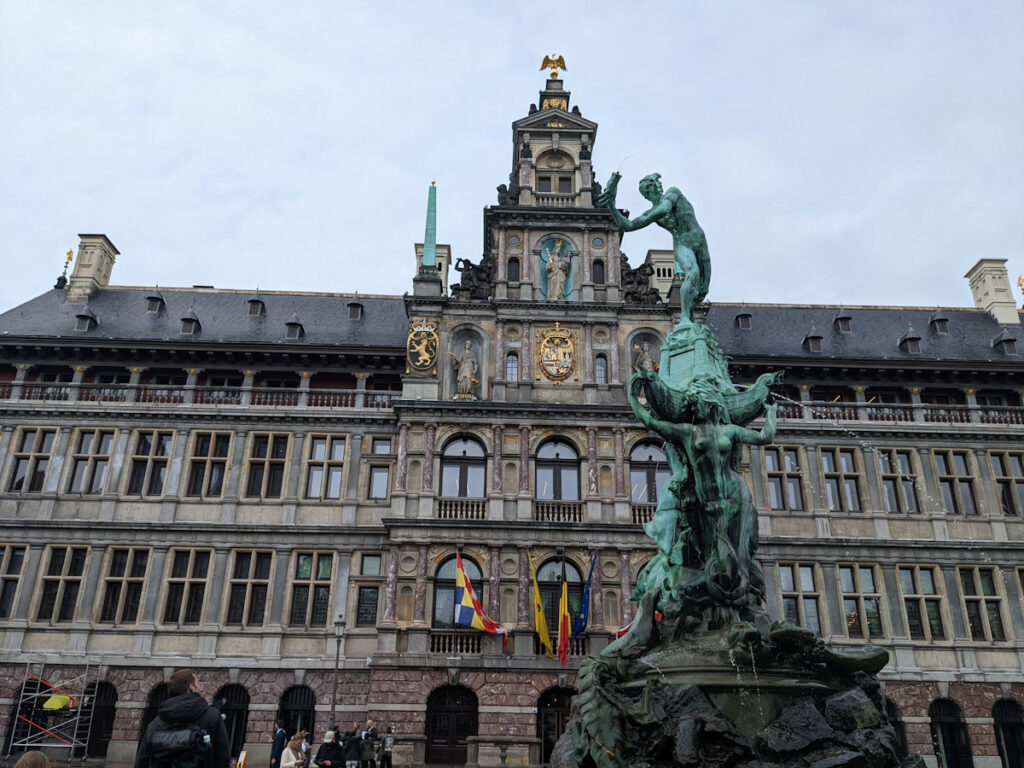
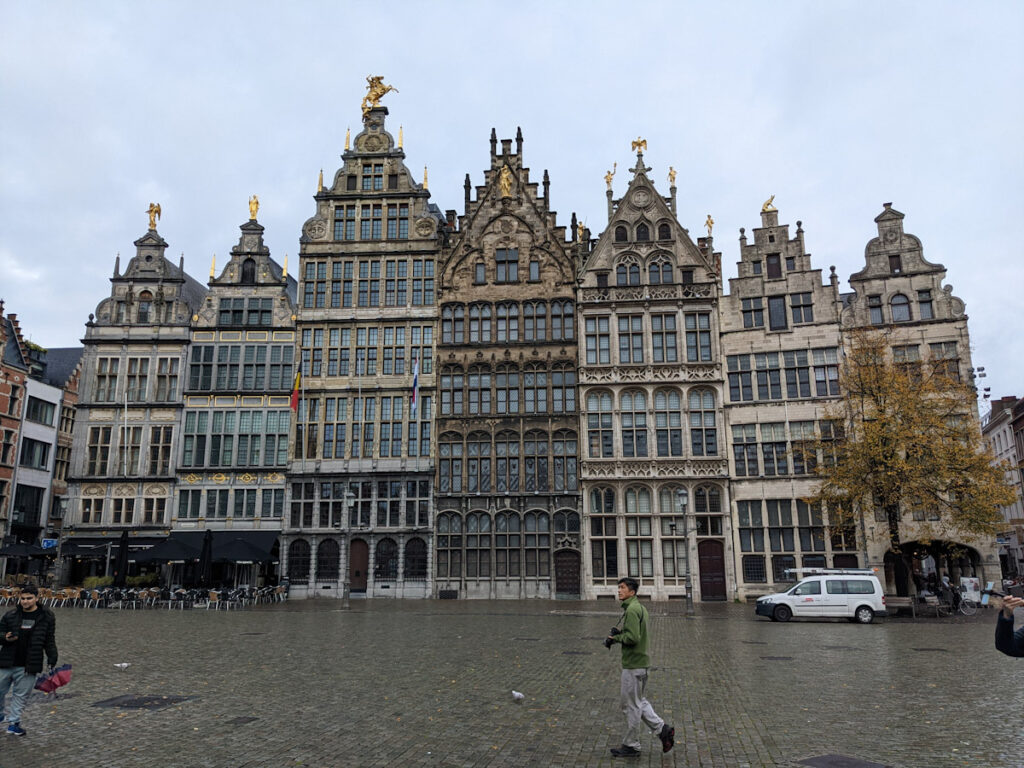
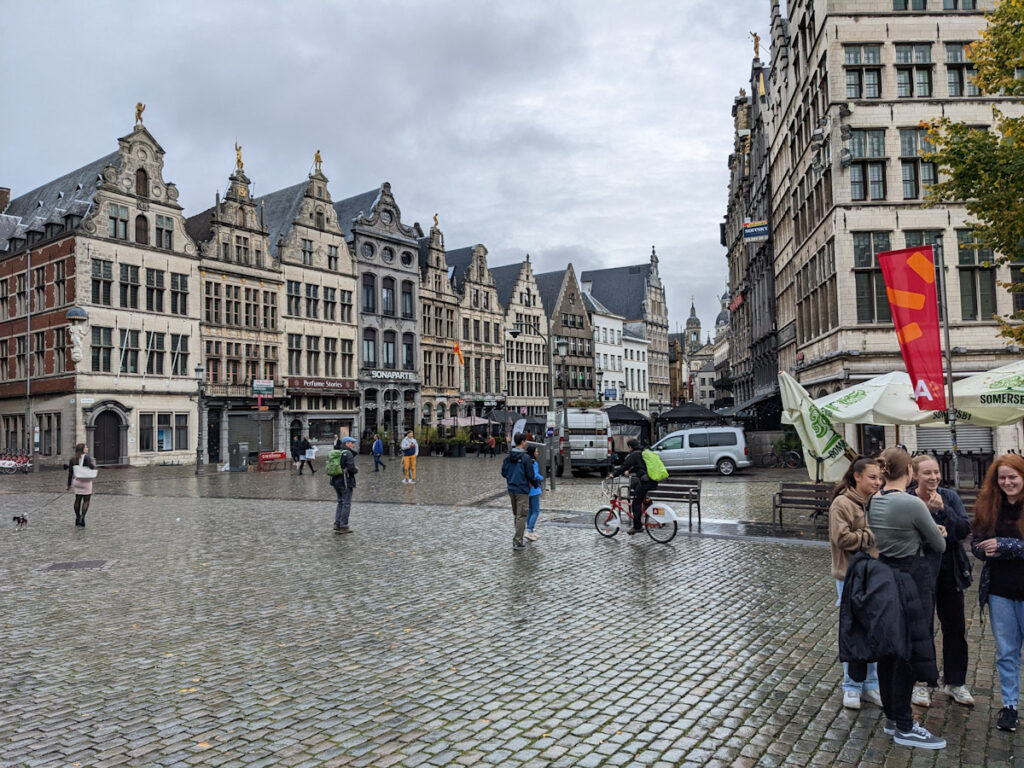
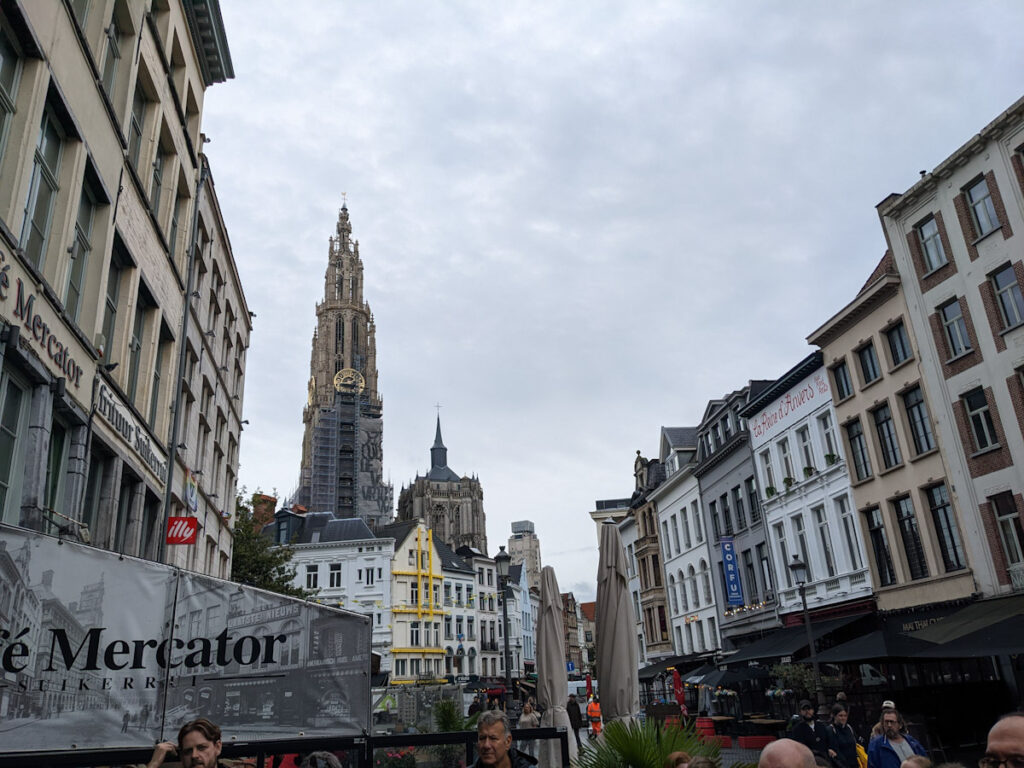
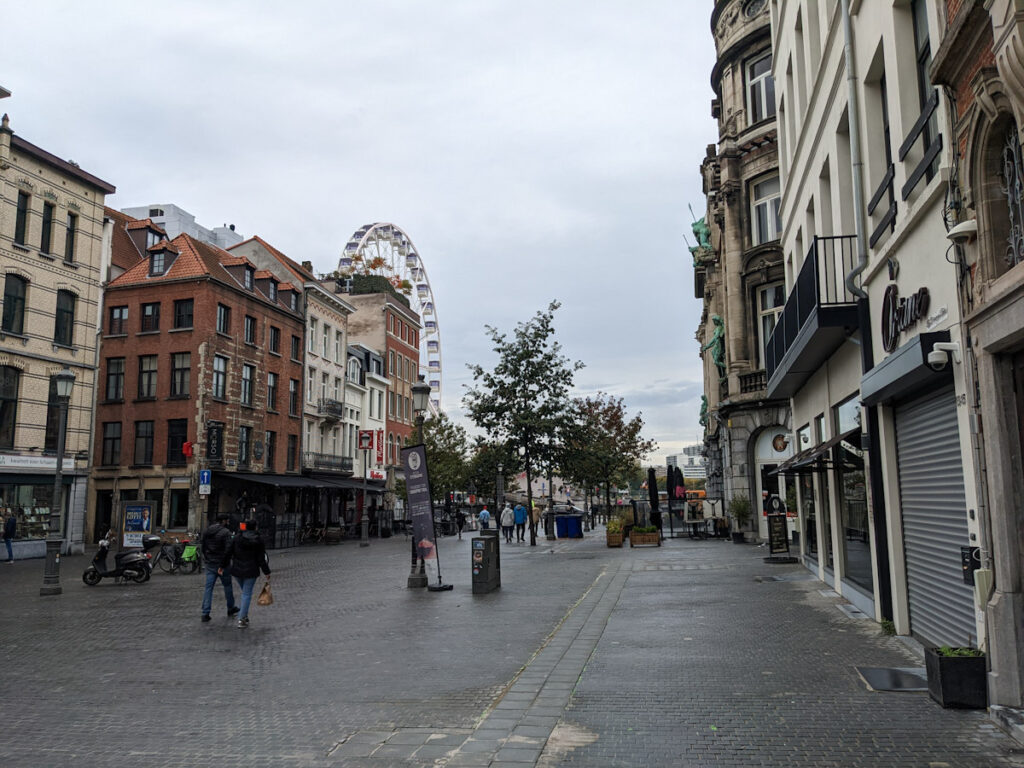
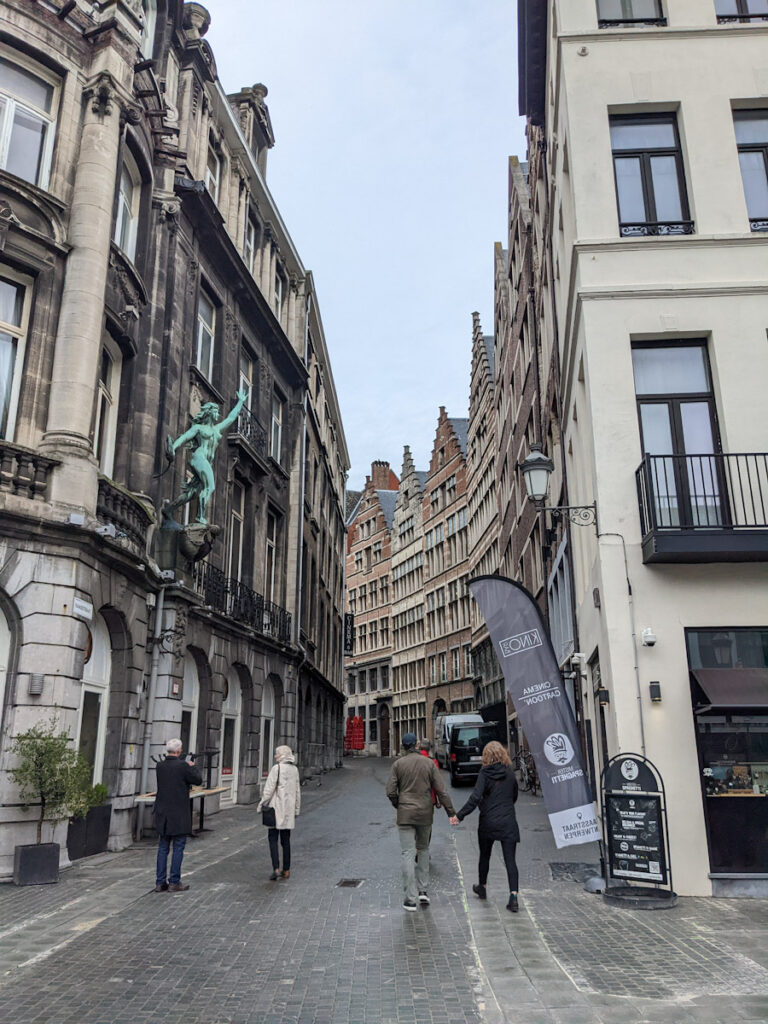
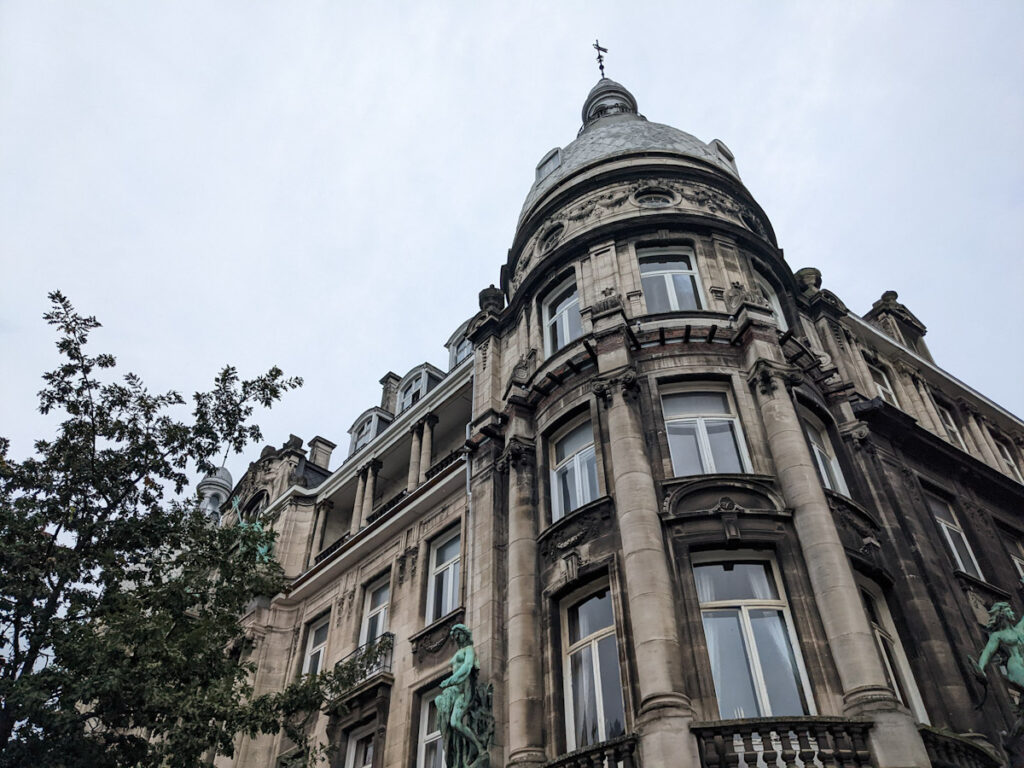

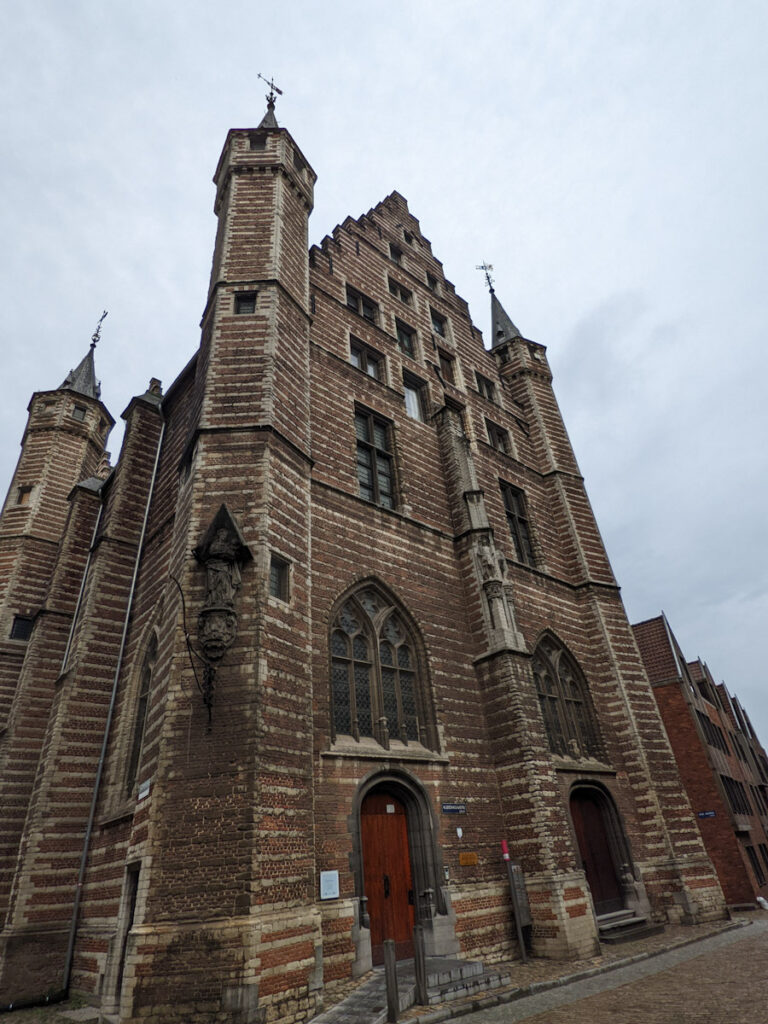
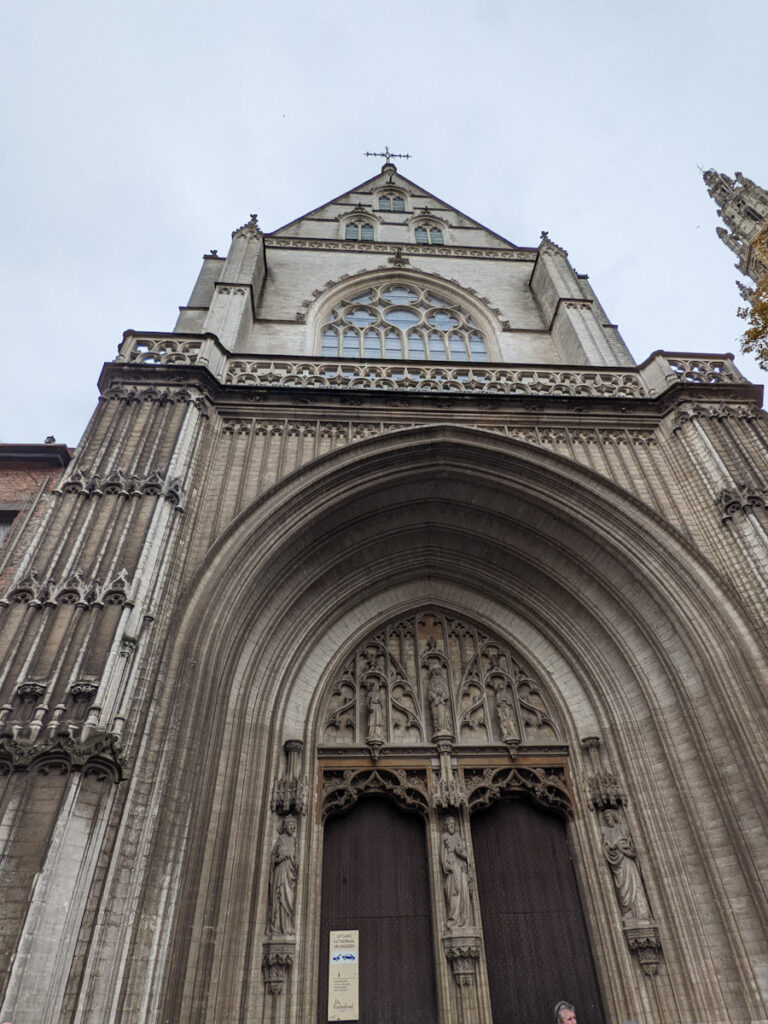
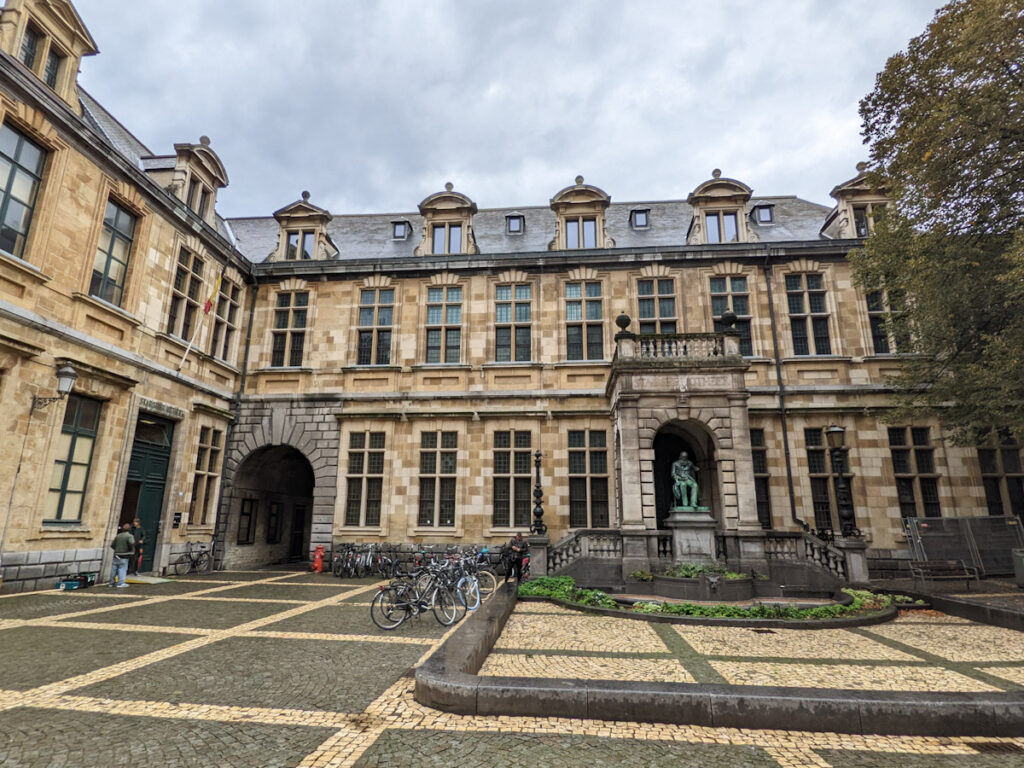
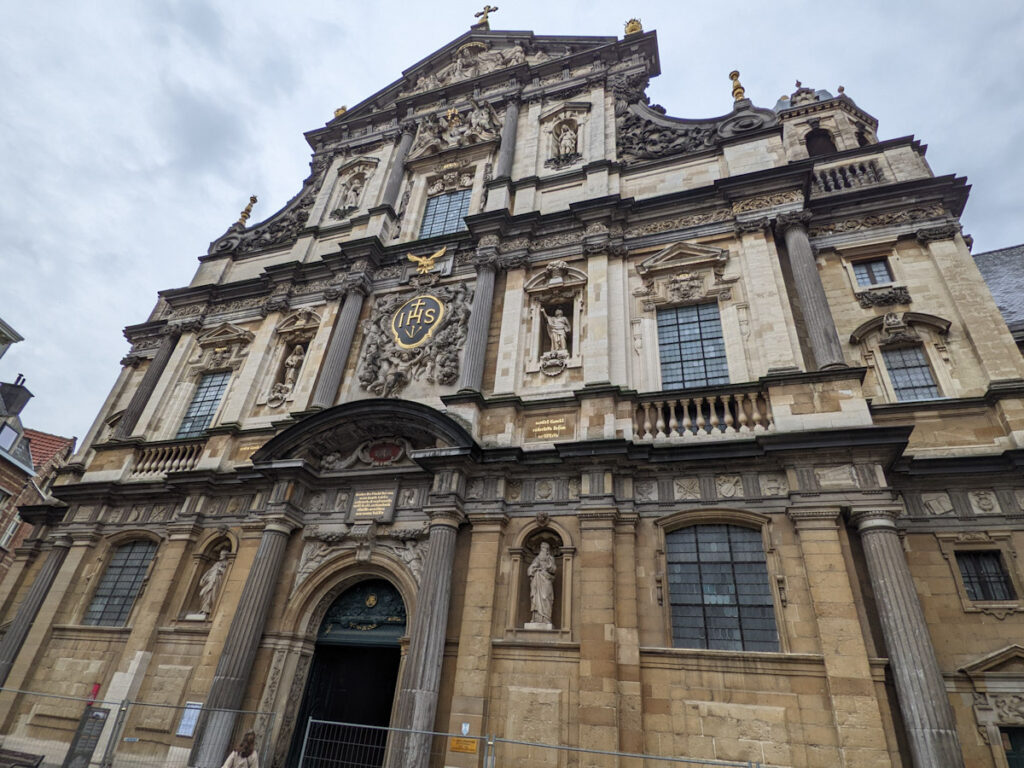

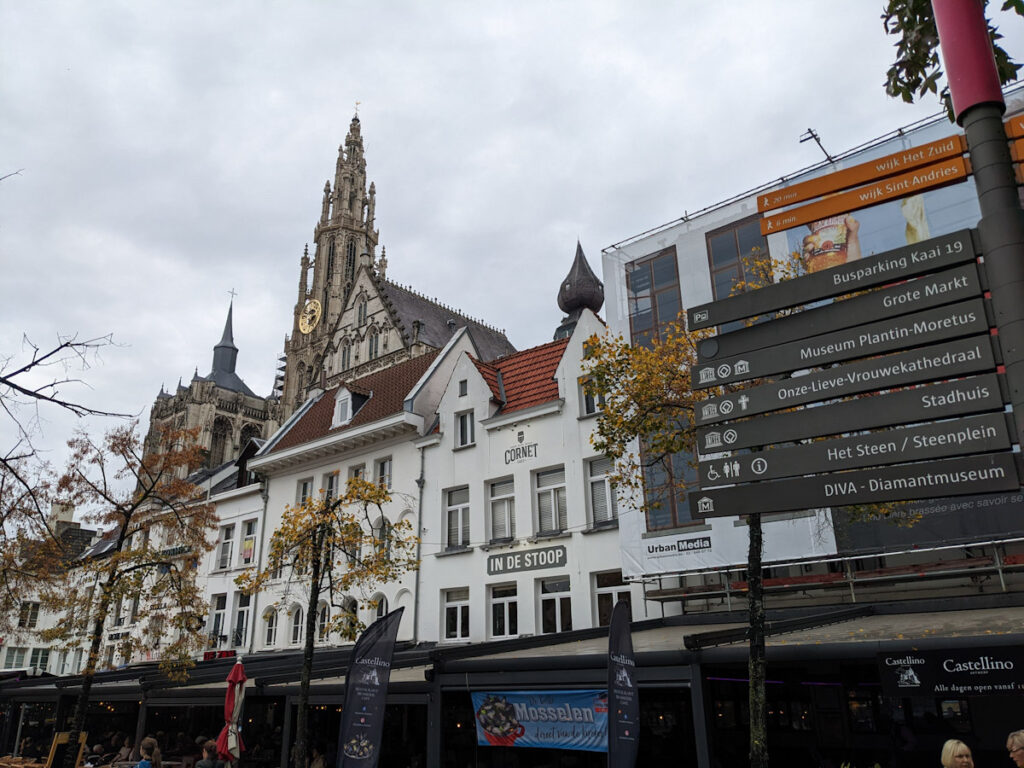


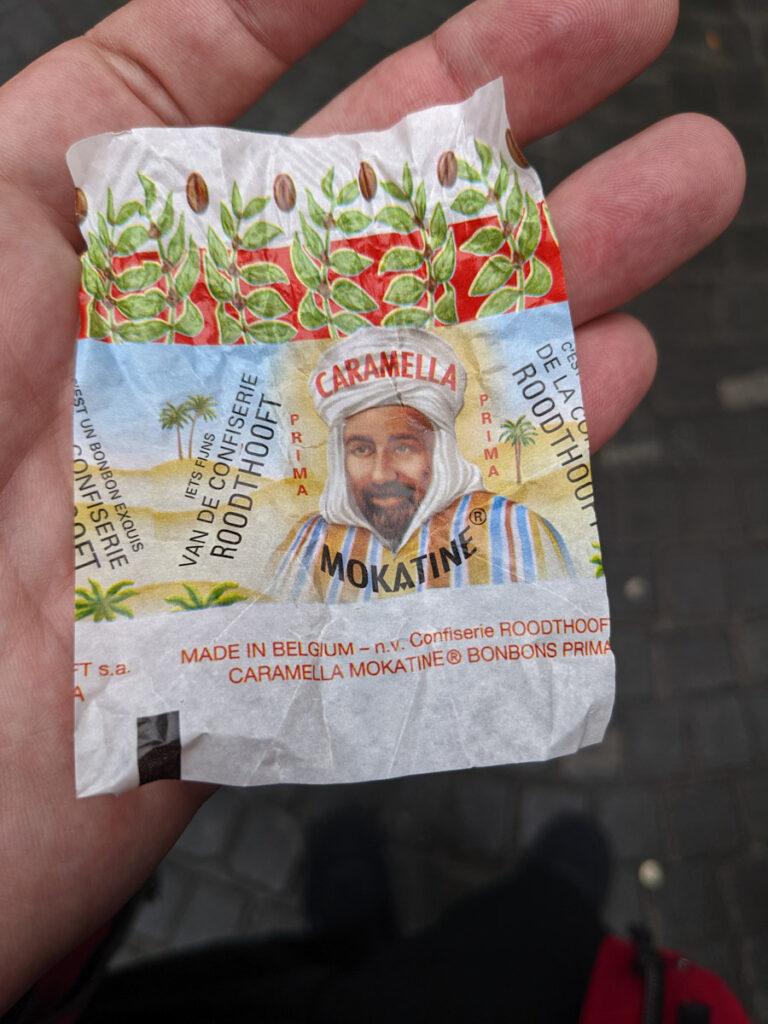
Het Elfde Gebod
The name of this establishment means “The Eleventh Commandment,” and the building was once owned by the adjacent church. Their theme seemed wonderfully sacrilegious, though I suspect faithful visitors appreciate the various effigies, giving them quite the broad customer base.
The draw was actually wanting to try another local dish somewhere in the vicinity of the tour’s end. It was unfortunately not available a la carte, so this became a three-course lunch.


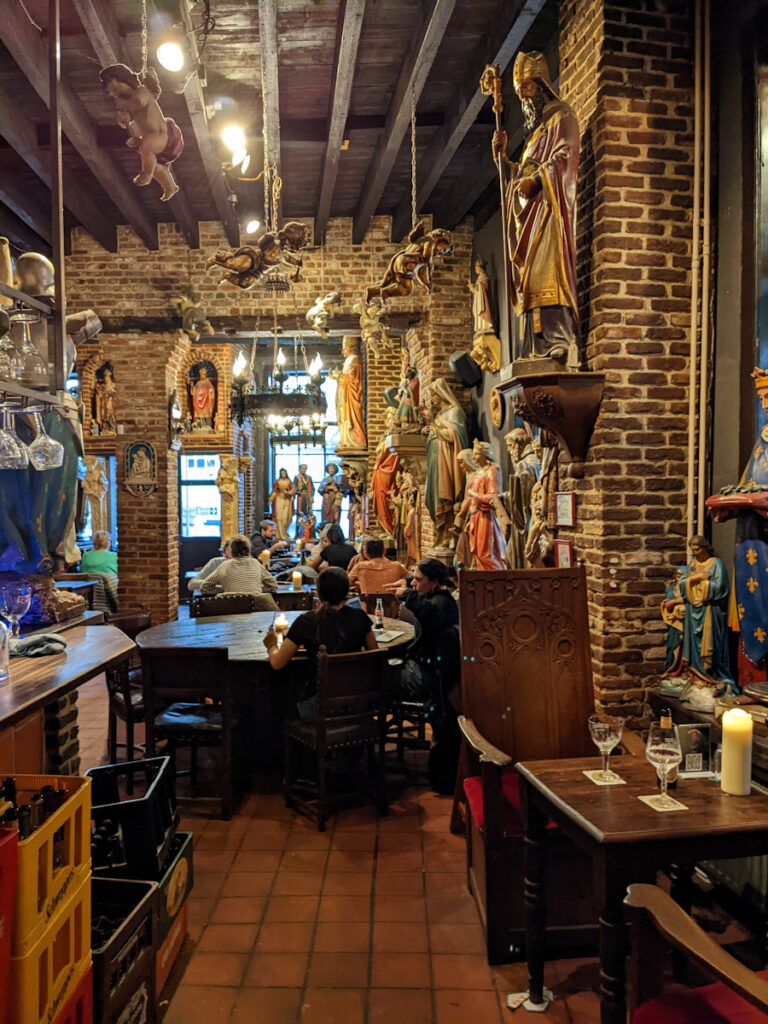
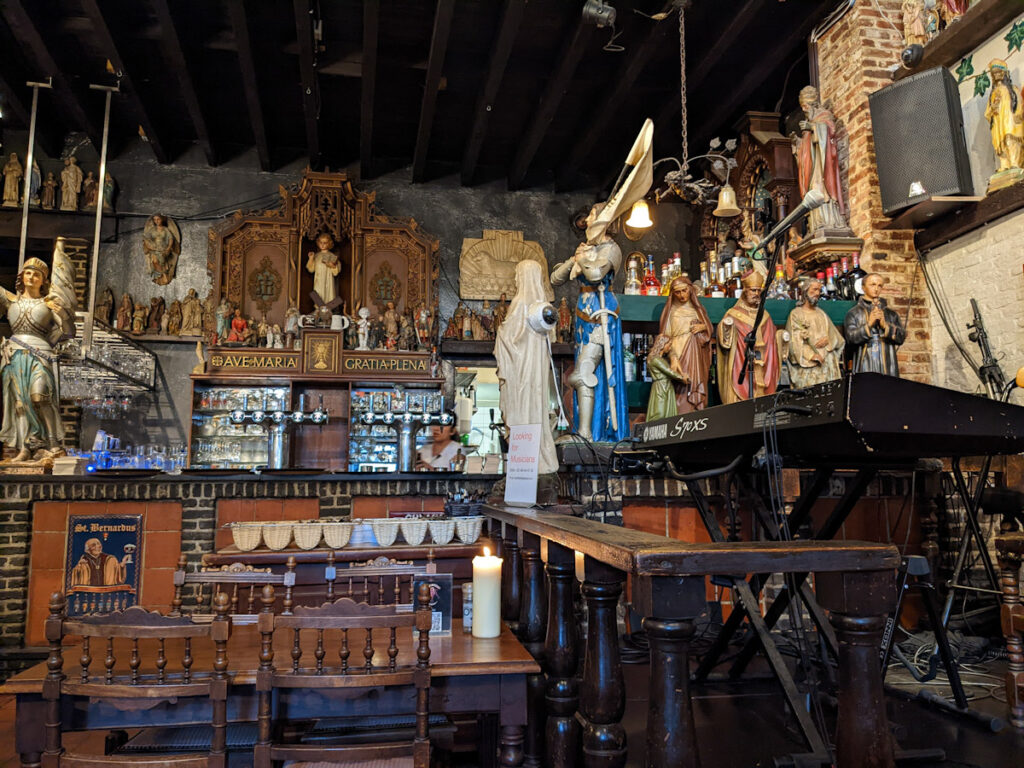
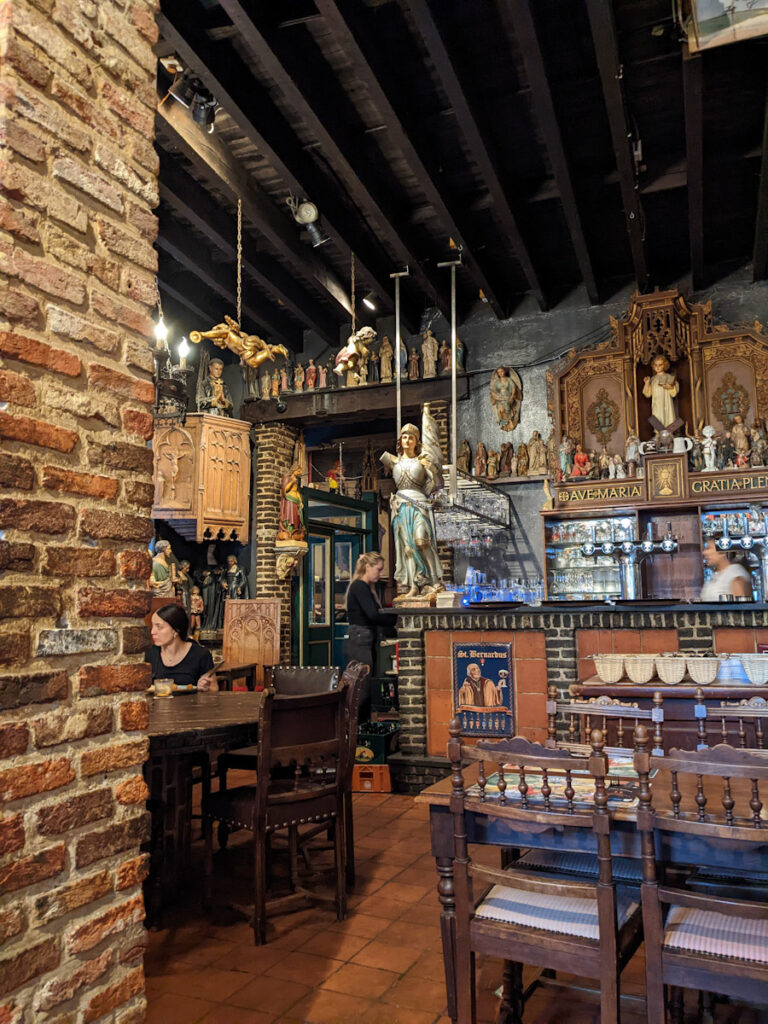

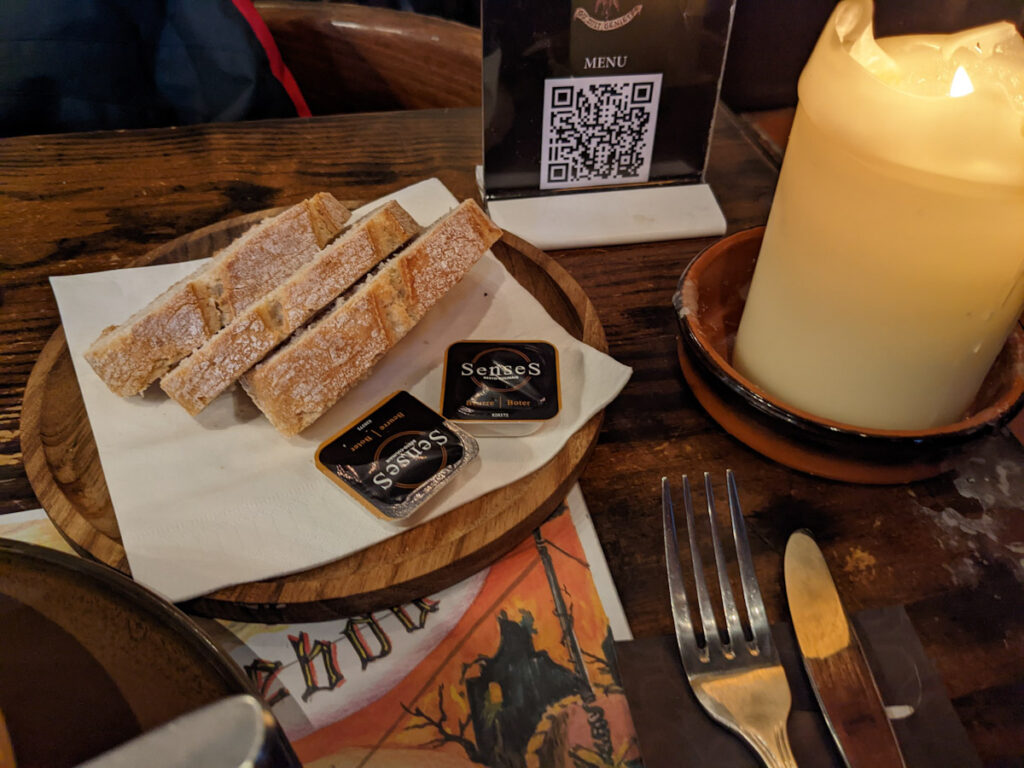

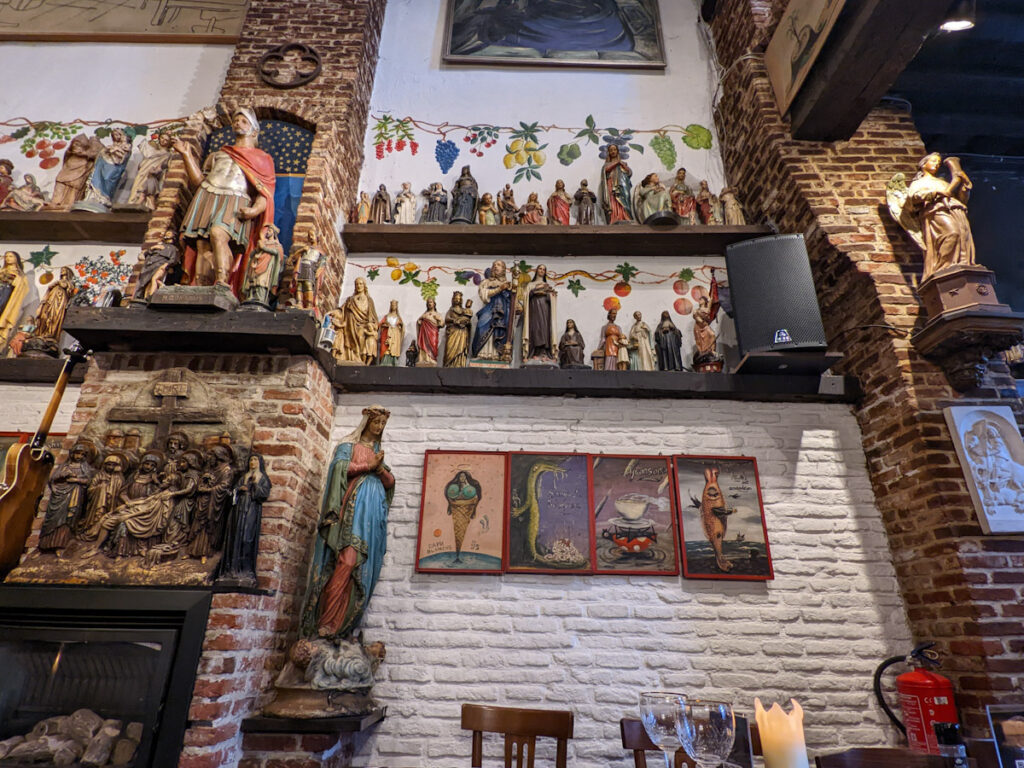

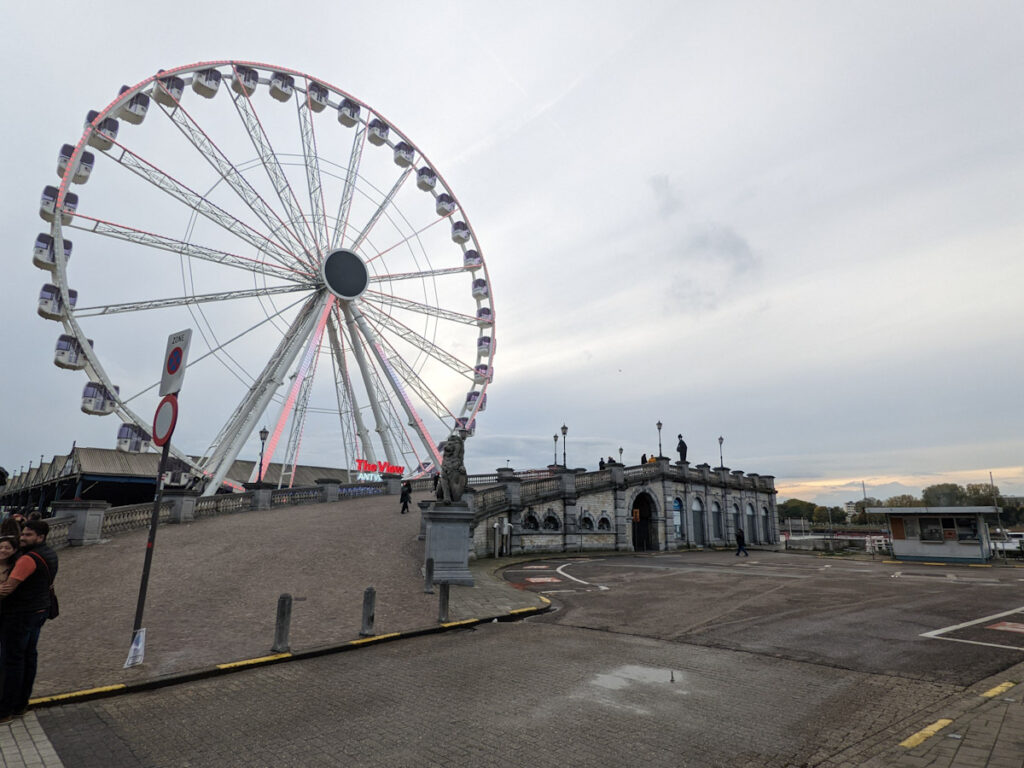
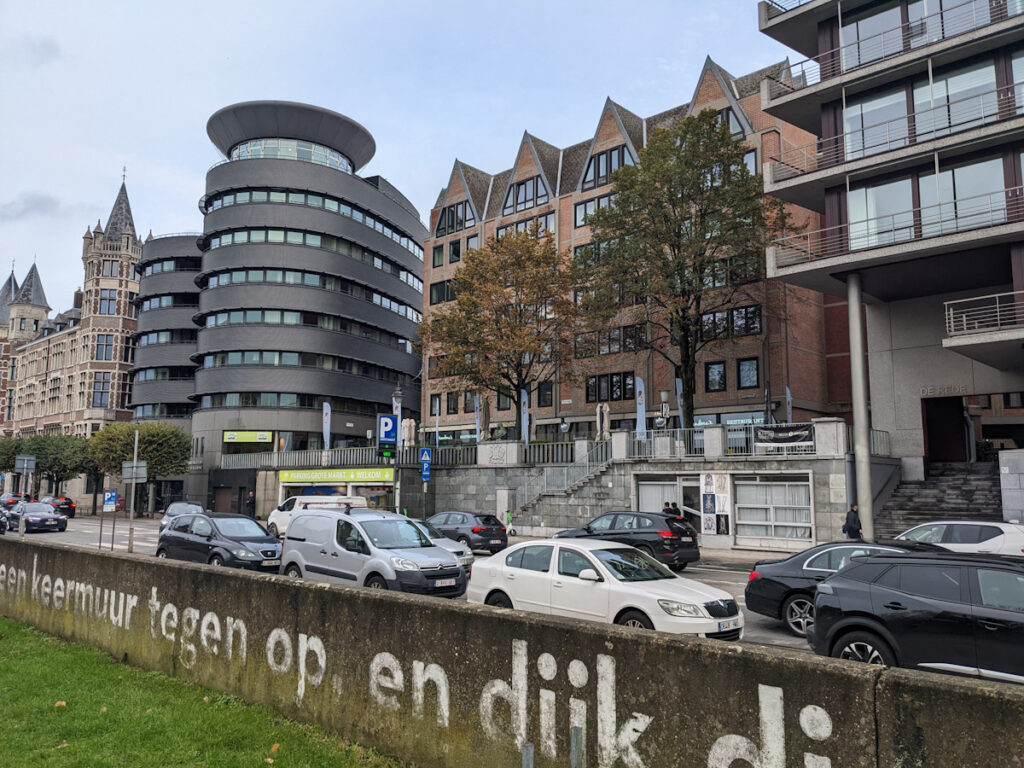
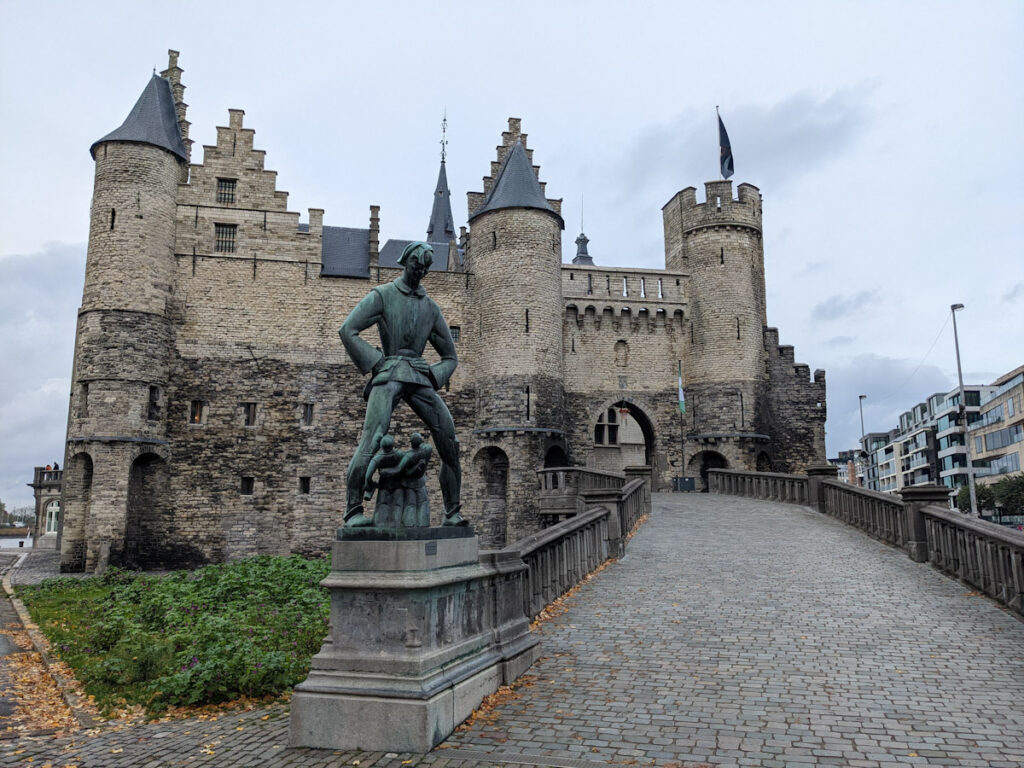
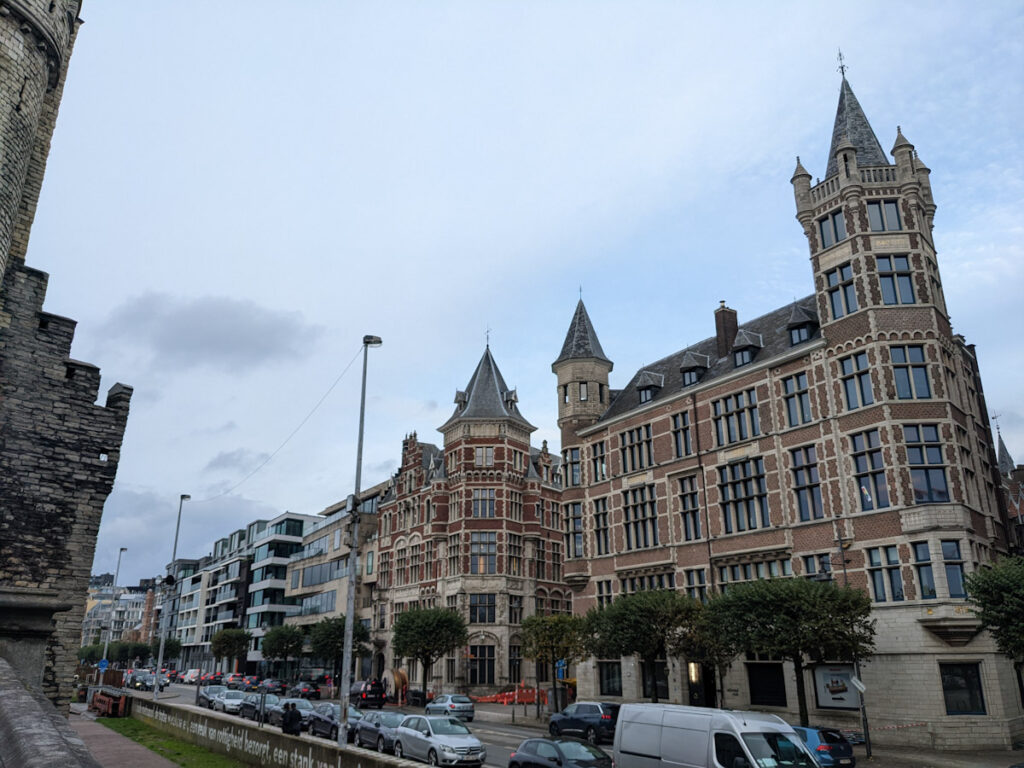
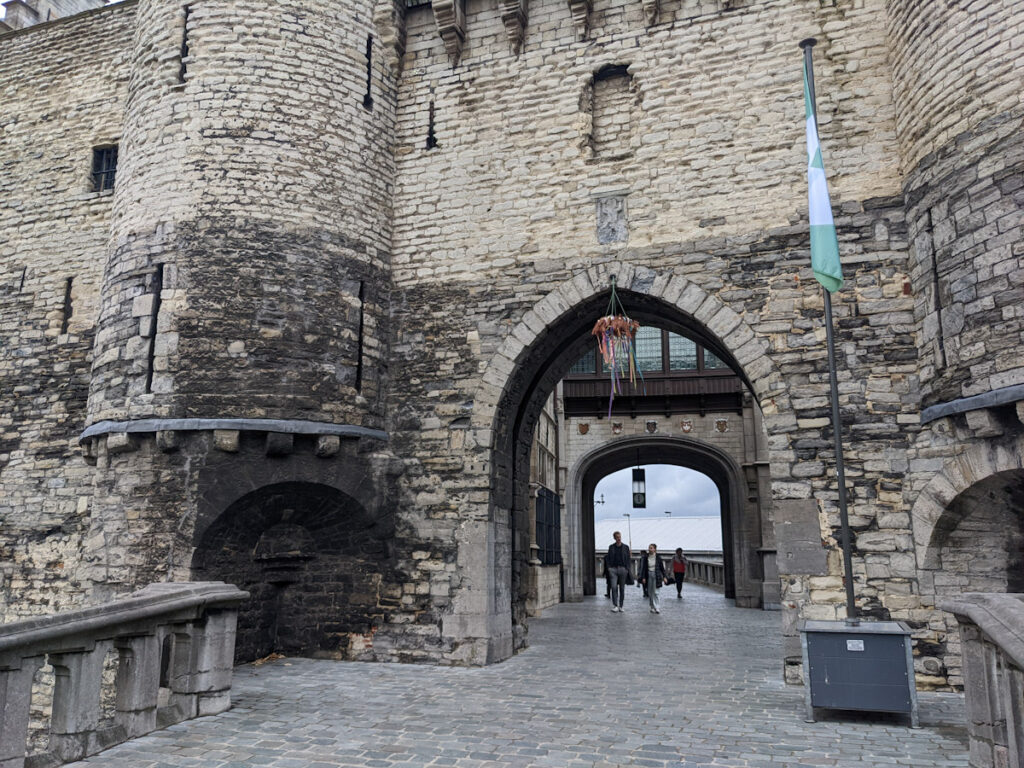

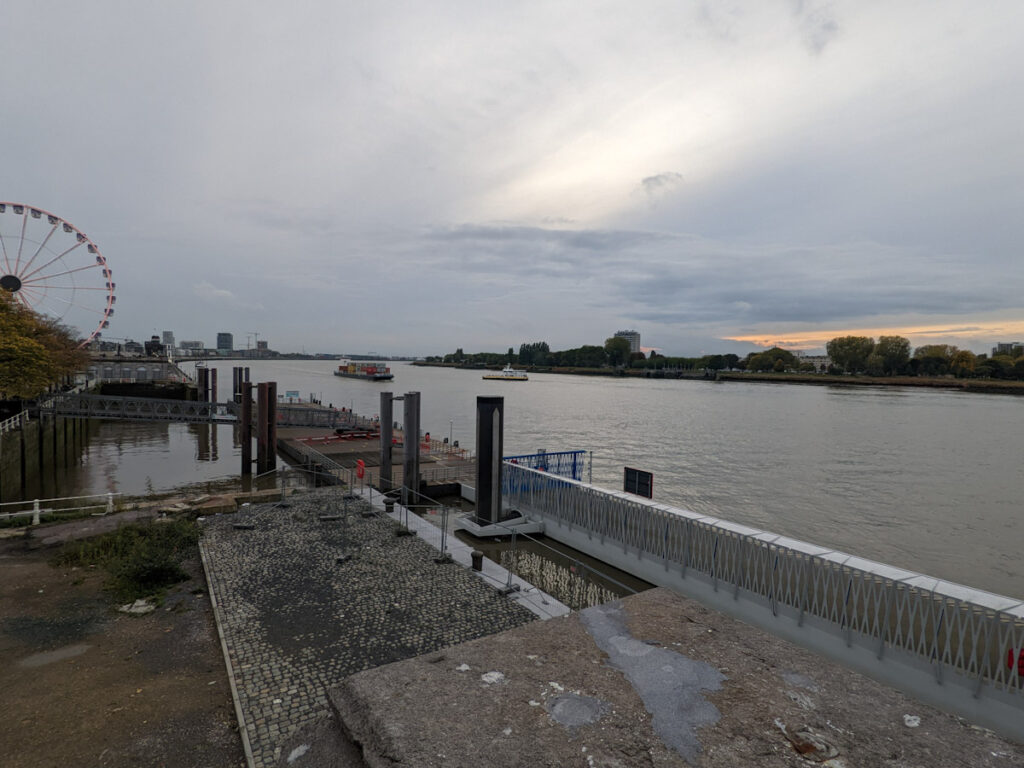

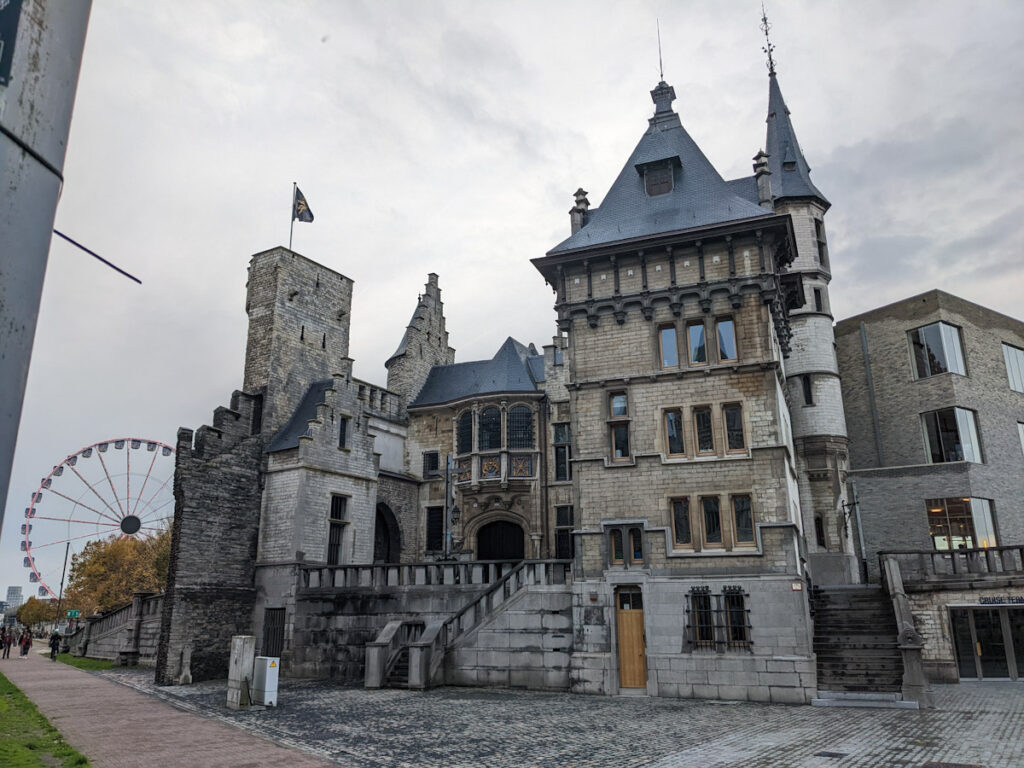
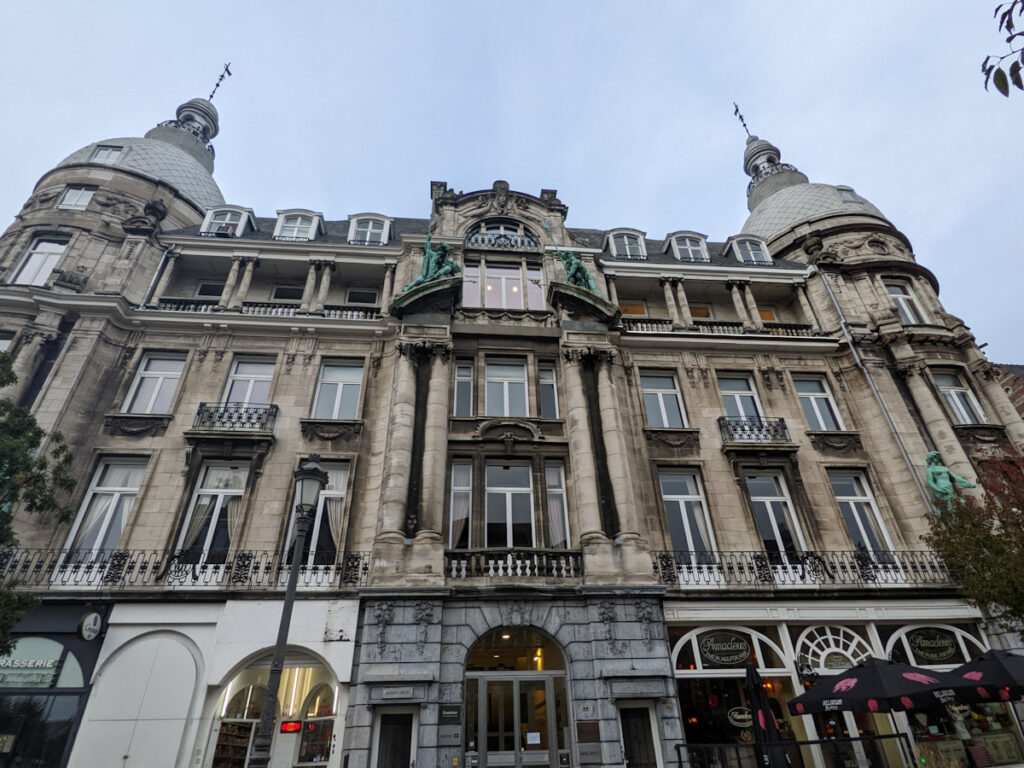
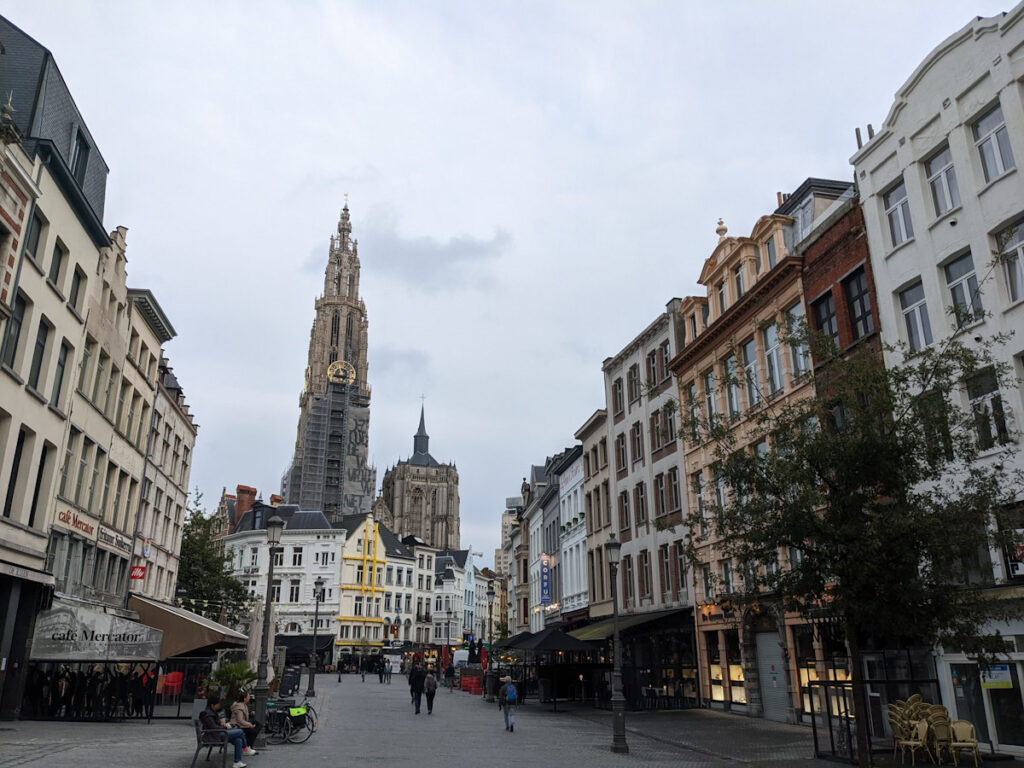
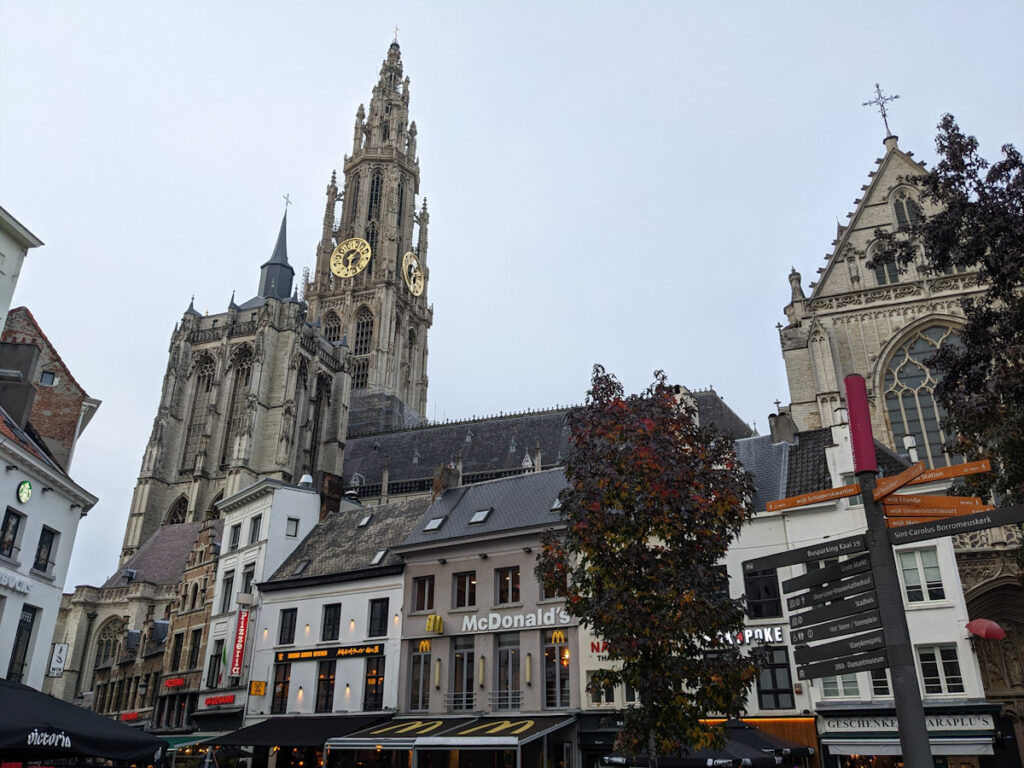
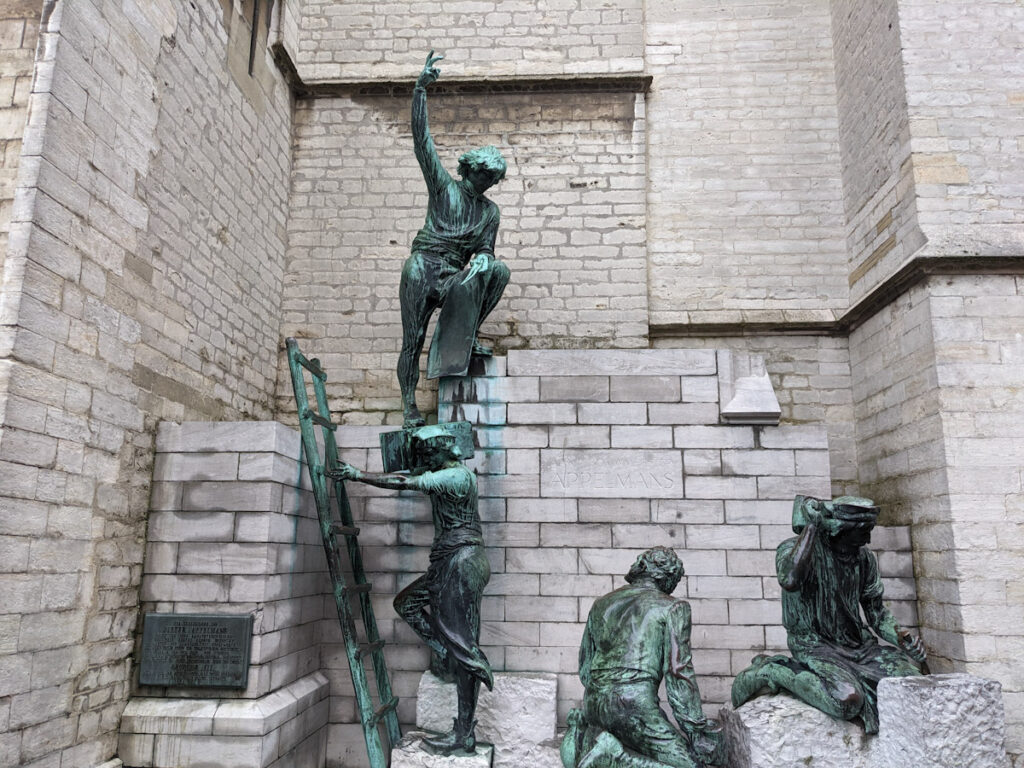
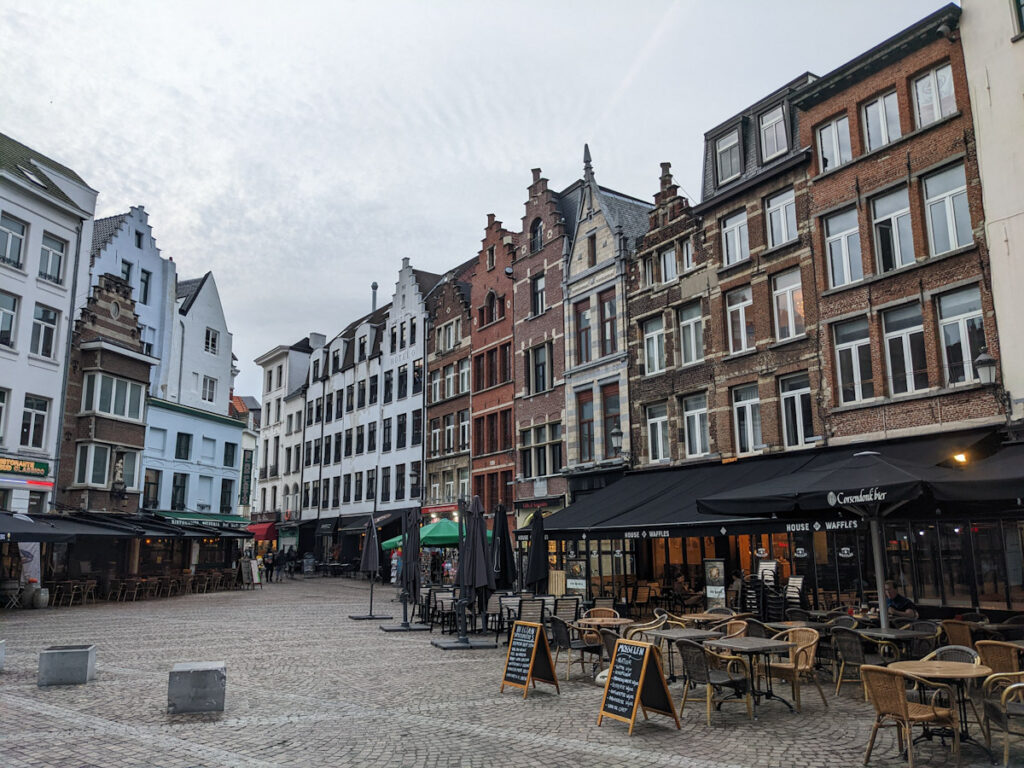
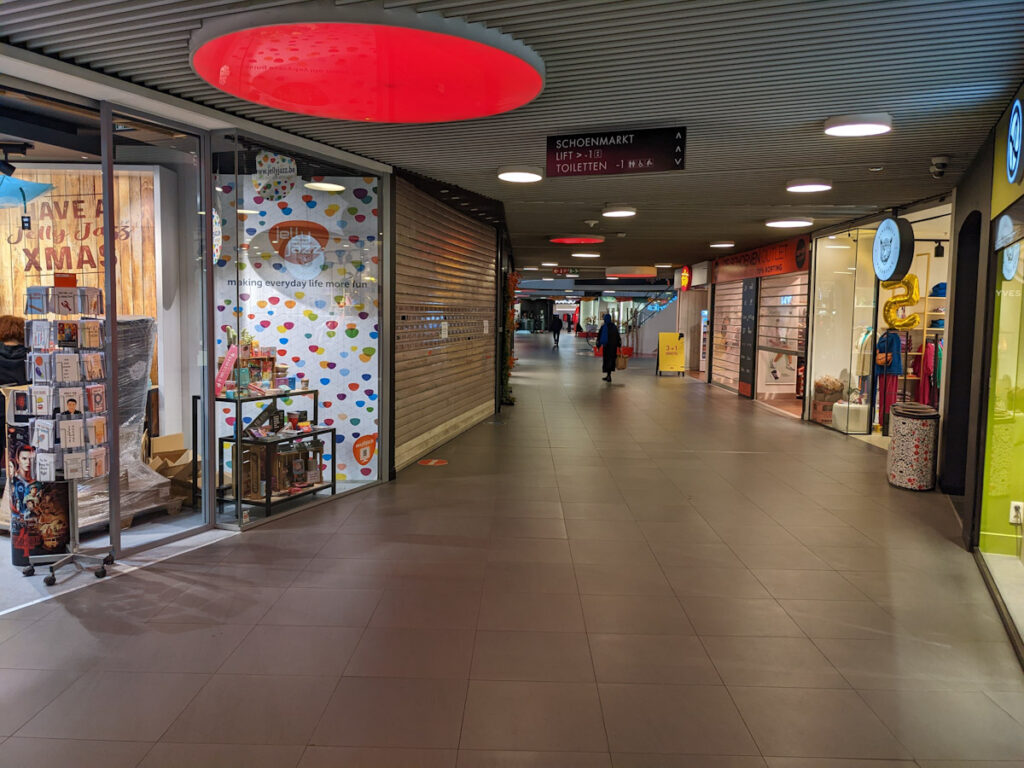
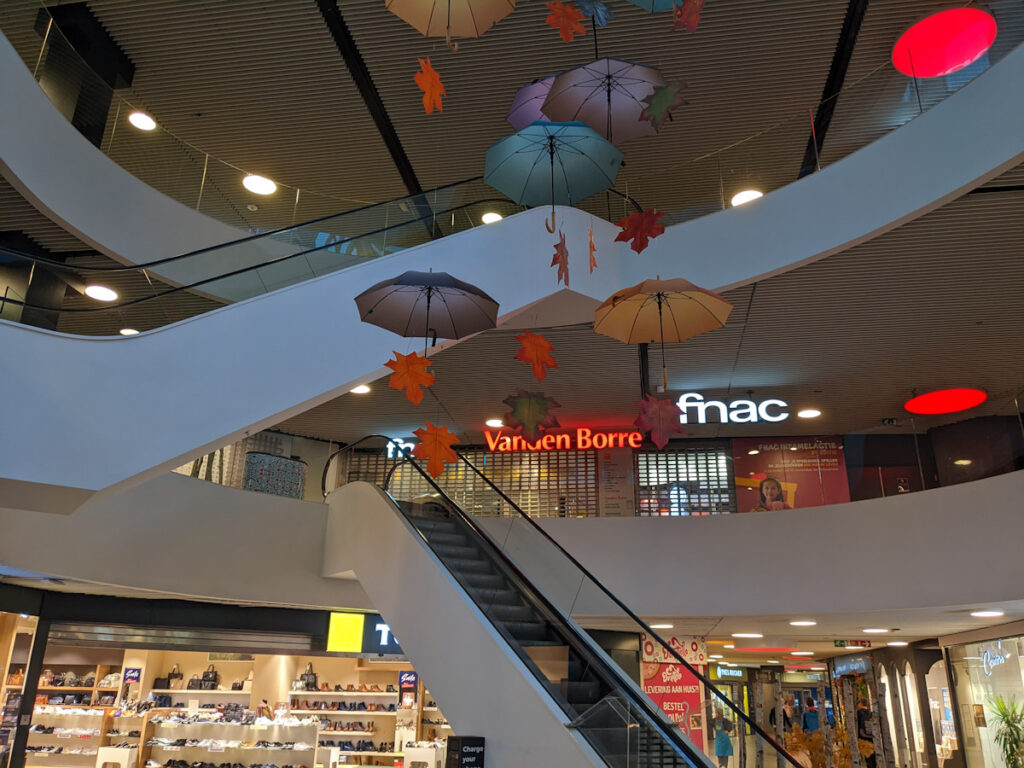

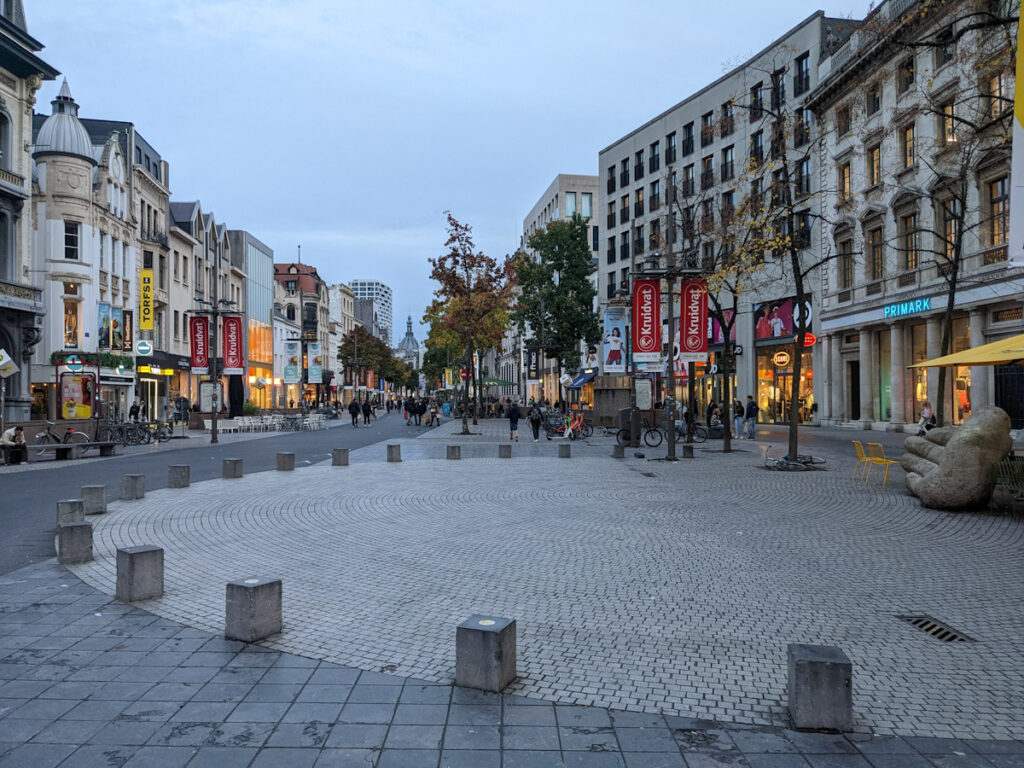
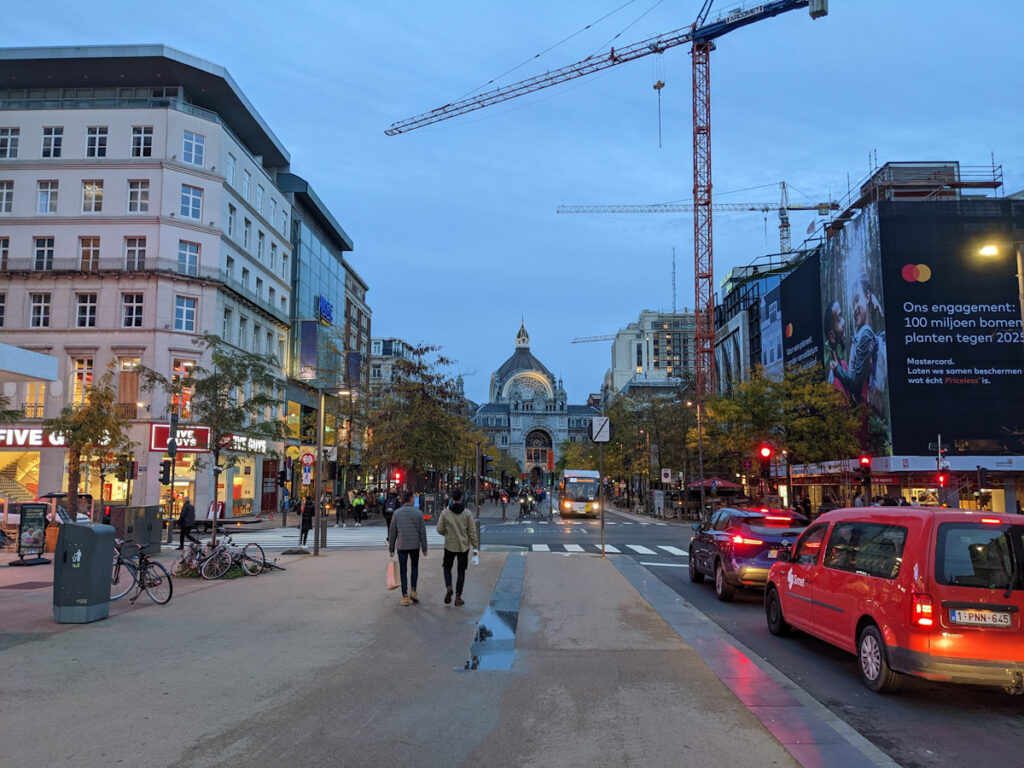
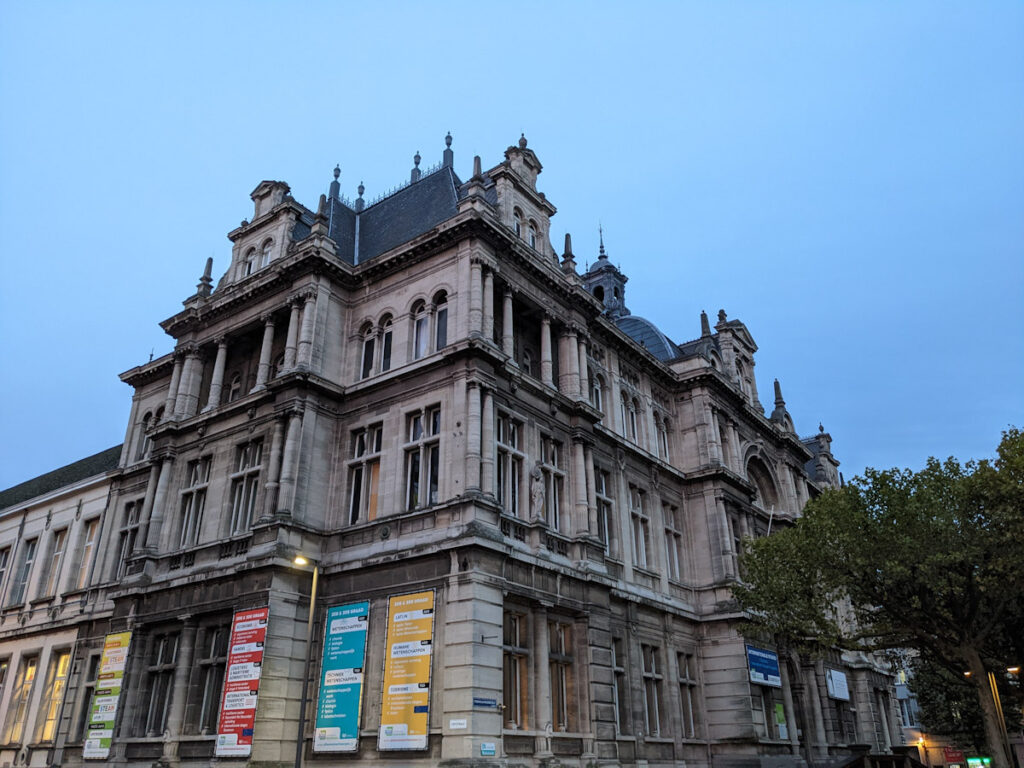
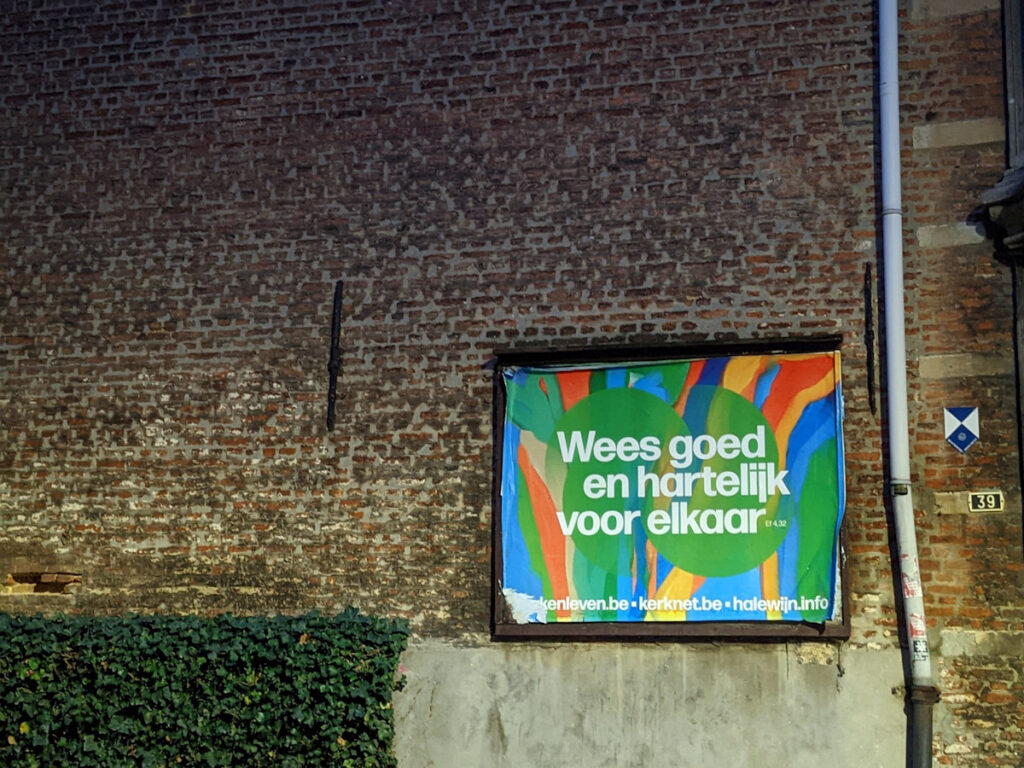




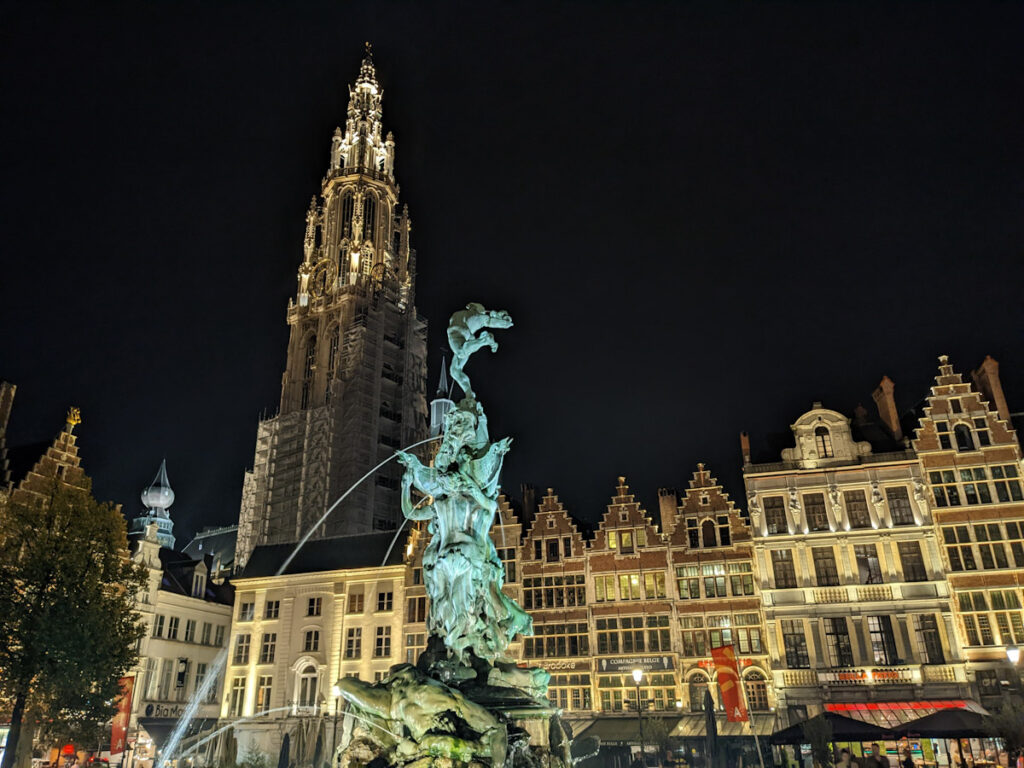
A Final Note
The nighttime shots were a reminder of a cultural difference specific to Antwerp. There was no clear city center where people would gather at night. Such a place is often ideal for an evening walk, with music and people-watching adding to the experience. Instead, many small groups crowded into individual cafes. There are a couple of busier squares, but it was mostly this feeling of familiar groups being segmented off, so as a solo traveler, it was clear that nighttime was going to be a struggle. Fortunately, the following evenings were much improved with this in mind!
